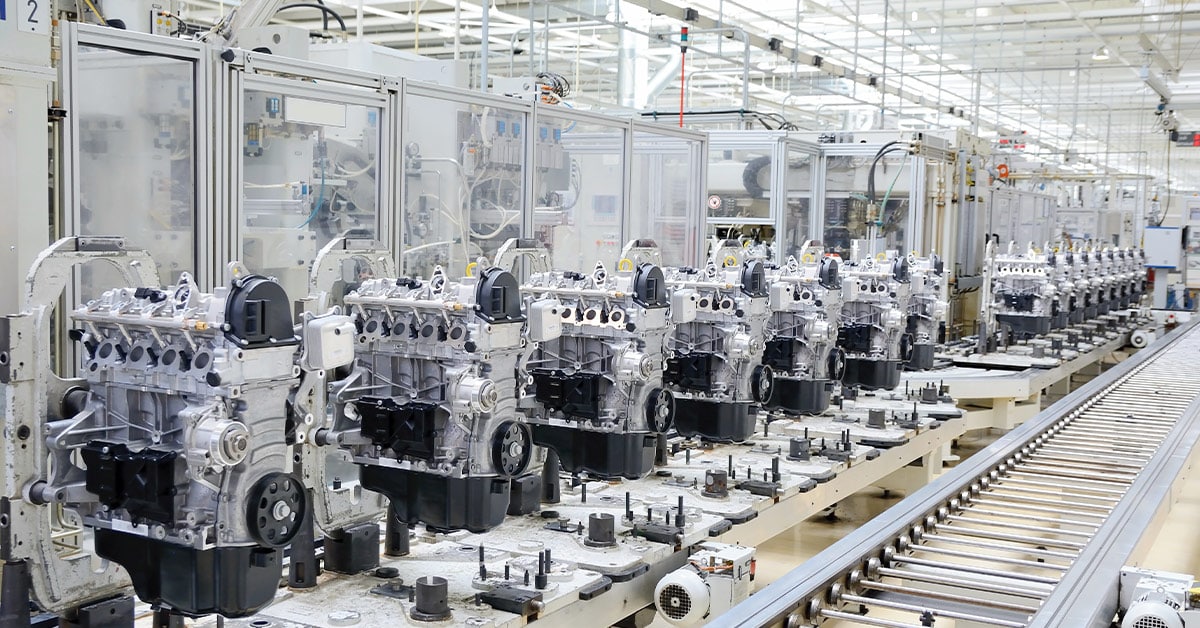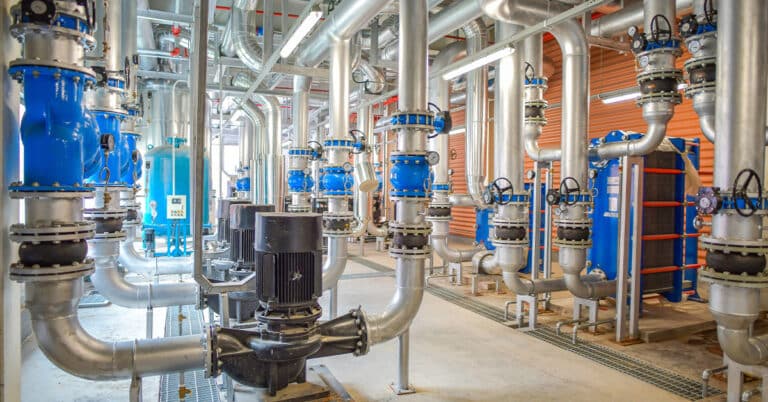Predictive maintenance minimizes machine downtime while extending life and reducing costs but requires data about their health and activity. This blog is about the machine data collection process. It discusses the types of machine data acquired, how a system operates and how it can be used.
What is machine data?
Any values reported by or measured at a production machine are machine data. This data could describe what the machine is doing, specific process variables, output data, quality data or data about the environment within the machine or the condition of the machine itself. Machine data collection also involves data that’s held on other systems used to manage the plant.
Types of machine data collected
Machines equipped with PLCs can collect data about processing conditions or the work performed. Machines can also be instrumented to gather data about their condition. The types of signals and records a machine data collection system can gather include:
Sensor data
Some of the industrial machine sensors used for process control can also capture machine health data. Examples are temperature, vibration, current draw and oil condition. Increasingly, machine builders are using “smart” sensors where edge computing capabilities filter or process data before transmitting it over a network.
Log data
This type of data quantifies what the machine has done and is often retained on a PLC or in PCs. It includes machine production data such as quantities processed, cycle times achieved, yields or measurement and other inspection results. It can also cover operational information such as run time and down time.
Network data
Some modern equipment comes with IoT sensors installed that can send data to other systems such as the CMMS. In other cases, manufacturers retrofit machines with IoT devices. Data is sent over wired Ethernet, Wi-Fi, Bluetooth or even cellular networks when longer range is needed.
Many process plants operate SCADA (supervisory control and data acquisition) systems where instrumented equipment shares status information with a central controller. This could be process parameters such as temperature or equipment condition, e.g., whether a valve is open or closed.
The importance of machine data in manufacturing
Manufacturing machine data gives visibility into what’s happening in the factory and can provide insights into equipment operation and performance. Uses include:
- Predictive maintenance: Machine condition data can drive a maintenance strategy where work is done just before it becomes necessary. This reduces maintenance costs while also improving machine availability.
- Yield improvement: Process data reveals sources of variation that result in product being outside of specifications. This can drive improvement efforts to find and reduce waste.
- Increasing utilization: Converting data on whether a machine is running, being changed over, waiting or even not powered up into a snapshot or cumulative report provides the visibility to address causes of non-productive time.
- Process optimization: Log and sensor data can reveal patterns and correlations that enable quality and productivity improvements. Optimizing drying times and coating thicknesses would be an example.
Methods and technologies for collecting machine data
The most successful implementations are where measurable improvements are achieved quickly. This can mean focusing on downtime reduction, maintenance cost savings or bottleneck utilization improvement.
Start by deciding what data to collect, then consider how to obtain it. This means establishing machine data collection goals before choosing and installing sensors and buying analytics software.
Having identified a target, an audit will show what data is already available. (It may be on PLCs, in the Quality Management System [QMS] or in the ERP system.) This will also reveal gaps where data is needed but is not available.
For data that is currently unused, investigate ways of getting it to a central location for storage and analysis. This may mean adding Ethernet connections to machines and setting up communication methods. Newer machines may have such abilities built-in but older equipment may need specialist devices added.
Where data gaps exist, investigate appropriate sensor technologies. Current draw for example, can indicate whether a machine is running, idle or not powered-up. For predictive maintenance additional temperature data, along with vibration and flow measurement, are often key elements in building up a picture of machine health.
Implement the sensors and the connectivity solutions chosen. Use analytics tools to interpret the data, and look for patterns that provide new insights into the reasons various events or conditions occur. Identify key metrics and set up dashboards to make these visible.
Crucial machine metrics to track
Machine data has no value until it’s turned into actionable information. One approach is to calculate and share or display metrics that let people see what’s happening where they should make improvements.
Some of the most important metrics are:
Uptime and downtime
Knowing whether machines are running, or for how many of the available hours they are running, is key to finding productivity improvements and determining maintenance effectiveness. This is especially important at the bottleneck process.
OEE
OEE (Overall Equipment Effectiveness) is used to assess asset utilization and identify where to focus improvement efforts. Data from PLCs and sensors like current monitors can provide some of the numbers for the OEE calculation.
First pass yield
This shows how much capacity is being wasted by product not meeting specifications. It can often be obtained from machine logs. Machine maintenance can often reduce the variability that causes a low First Pass Yield.
MTBF
MTBF (Mean Time Before Failure) is an indicator of maintenance effectiveness. If predictive maintenance is being applied effectively, machines will run for a long time without breaking down.
Energy costs
Manufacturers can measure the consumption of energy-intensive processes by installing current or other types of meters. This will steer management towards the biggest cost reduction targets.
Production volume
More granular information on order status improves visibility, enabling better schedule adherence, higher machine utilization, and more accurate forecasting. While the Manufacturing Execution System (MES) usually tracks orders, capturing data directly from the machines gives an immediate indication of production rate and yields data like cycle times that can be used to improve production planning.
Future trends in machine data collection
The number of data collection tools available to managers continues to grow while their costs fall and capabilities increase. IoT sensors are enabling far greater volumes and rates of data capture than has been the case before.
This data will increasingly feed into a “digital thread” linking machines to the CMMS, parts inventories and production schedules, all with the goal of reducing waste and improving efficiency.
An emerging challenge is how to deal with the quantity of data that will be captured. A predictive maintenance system for example may encompass dozens of sensors installed on hundreds of machines.
Throughout manufacturing, but especially in maintenance, AI will become essential. AI in predictive maintenance, for example, will identify patterns and trends in machine health, enabling it to recommend and schedule service and even order replacement parts.
Partner with experts to improve maintenance performance
The increasing availability of machine data gives manufacturers new ways to find and make operational improvements. Increased visibility and improved forecasting capabilities will lead to problems being addressed at the first indication and before they become costly and disruptive.
Maintenance may be one of the biggest beneficiaries of manufacturing machine data collection. Predictive maintenance will be adopted more widely, letting manufacturers increase capacity while reducing costs. ATS has long been a leader in industrial maintenance. We understand the challenges and have the resources and experience to bring about sustained improvement. Contact us for more information.






